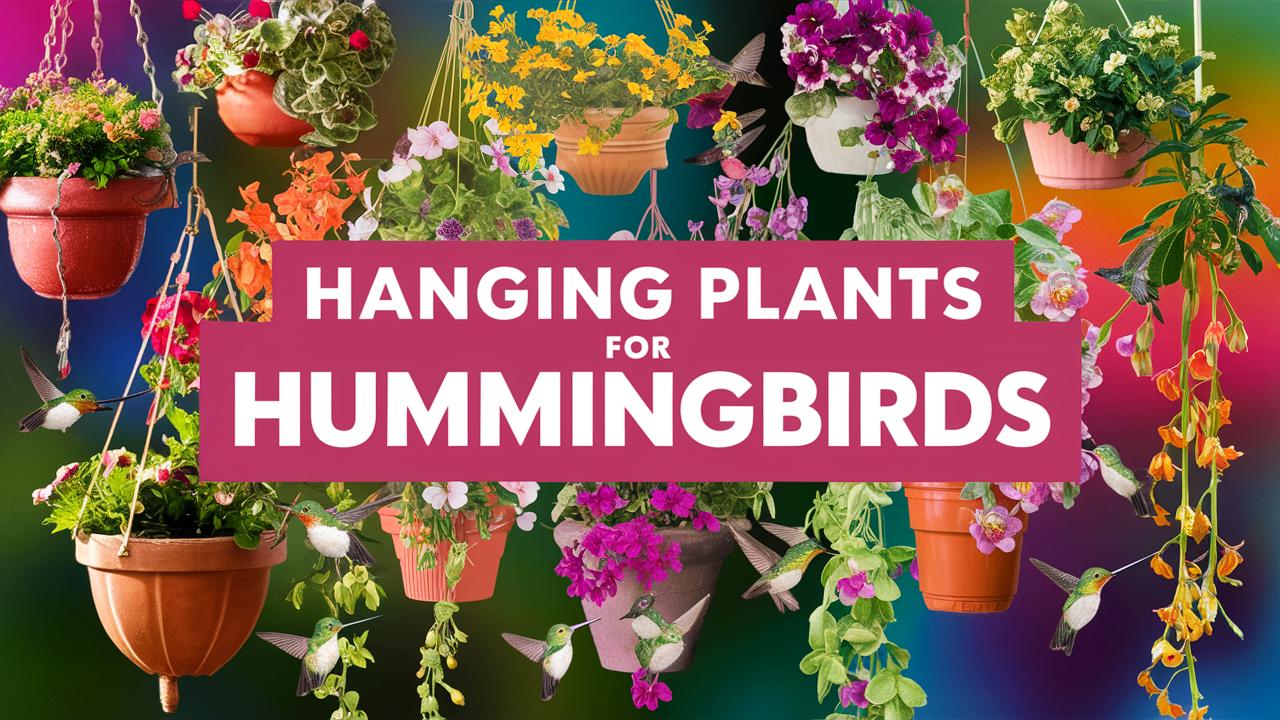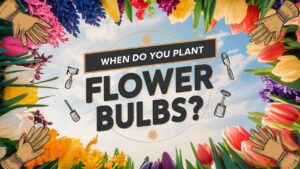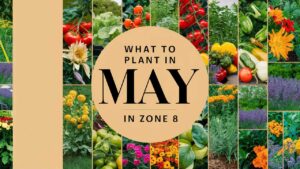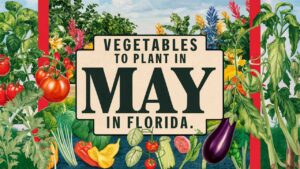In this comprehensive guide, we’ll explore various hanging plants that are particularly effective in attracting hummingbirds. Each section highlights a different species, showcasing its unique appeal and benefits.
Fuchsia
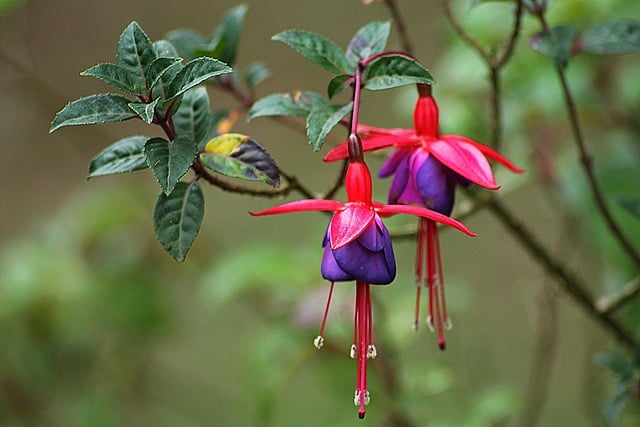
Fuchsia plants are a top choice for any hummingbird enthusiast. Their delicate, drooping flowers are not only visually stunning but also emit a sweet nectar that hums with the promise of a feast for these tiny creatures. The tubular shape of the fuchsia flower is ideal for hummingbirds, which can easily insert their long bills to extract nectar. With varieties that bloom in luscious shades of pink, purple, and red, fuchsias often bring a touch of elegance to any hanging arrangement. They thrive in partial shade and make excellent additions to a shaded patio or balcony, where hummingbirds can flit about freely.
Petunia

Petunias are a garden favorite, and for a good reason—they’re not just pretty but also incredibly inviting to hummingbirds. These flowers come in a vivid array of colors and patterns, making them a delightful choice for any hanging basket. They flourish in sunny spots and are known for their ability to bloom abundantly throughout the growing season. Their open, trumpet-shaped flowers allow easy access to nectar, directly appealing to the feeding needs of hummingbirds. Planted in well-drained soil and regularly deadheaded, petunias offer a colorful and fragrant landscape that will surely attract winged visitors.
Lantana
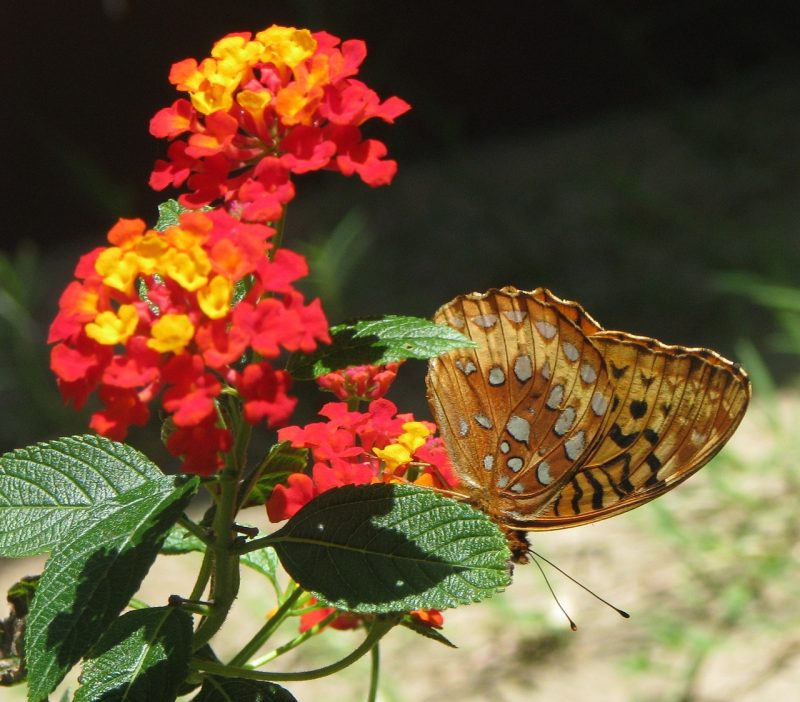
Lantana flowers boast a mix of colors that are sure to catch the eye of both gardeners and hummingbirds alike. These hardy plants are drought-resistant and thrive in full sun, making them perfect for hanging baskets in warm climates. The flowers are known for their nectar-rich clusters, which can provide a quick snack for hummingbirds looking to refuel. Lantanas have the added advantage of attracting a variety of pollinators, from butterflies to bees, resulting in a lively, dynamic garden. Their long-lasting blooms make them a reliable choice for continuous hummingbird visits.
Begonia
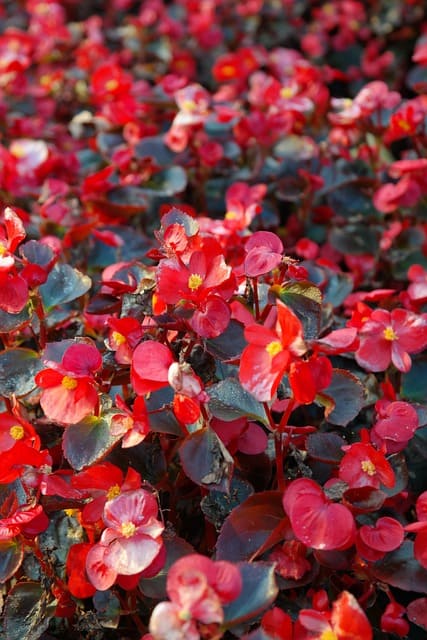
Begonias are a vibrant choice for hanging plants, offering both beauty and a hummingbird-friendly environment. With their lush foliage and a wide range of flower colors, begonias not only add visual interest but also produce a modest amount of nectar that can attract hummingbirds. These plants prefer partial shade, making them ideal for hanging in areas that receive filtered light. Their resilience to different growing conditions allows them to thrive even in less-than-ideal environments. While not the main attractant for nectar, the presence of begonias can create a more diverse and appealing space for hummingbirds to explore.
Salvia
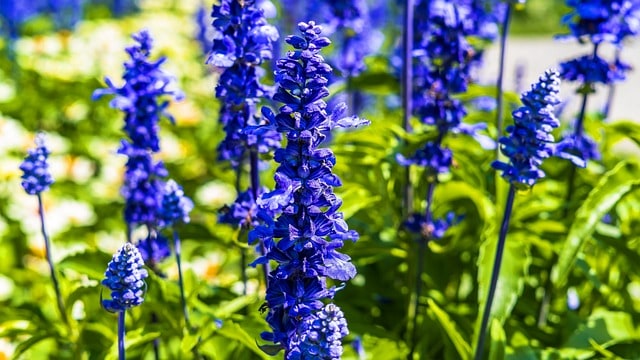
If you’re looking for a plant that buzzes with activity, salvia should be on your list. Known for its vibrant spikes of flowers in shades of blue, purple, and red, salvia is a magnet for hummingbirds. The long tubular blooms provide easy access for their long beaks and offer nectar that is high in sugar content—just the energetic boost these birds need. Salvia is drought-resistant and thrives in full sun, making it a practical and beautiful option for hanging baskets or planters. Beyond attracting hummingbirds, salvia flowers are also known to attract bees, making your garden a bustling hub of activity.
Trumpet Vine

For those with a little more space and a daring aesthetic in mind, trumpet vine is a stunning option. This vigorous climber produces large, trumpet-shaped flowers that are favored by hummingbirds. The orange and red blooms are highly visible and emit a sweet fragrance, making them irresistible. While trumpet vine is often left to climb, it can be trained in hanging configurations for a dramatic effect. Do bear in mind that this plant can be quite aggressive in its growth, so regular pruning is recommended to keep it in check. The vibrant blossoms not only draw in hummingbirds but also create a striking visual display.
Honeysuckle
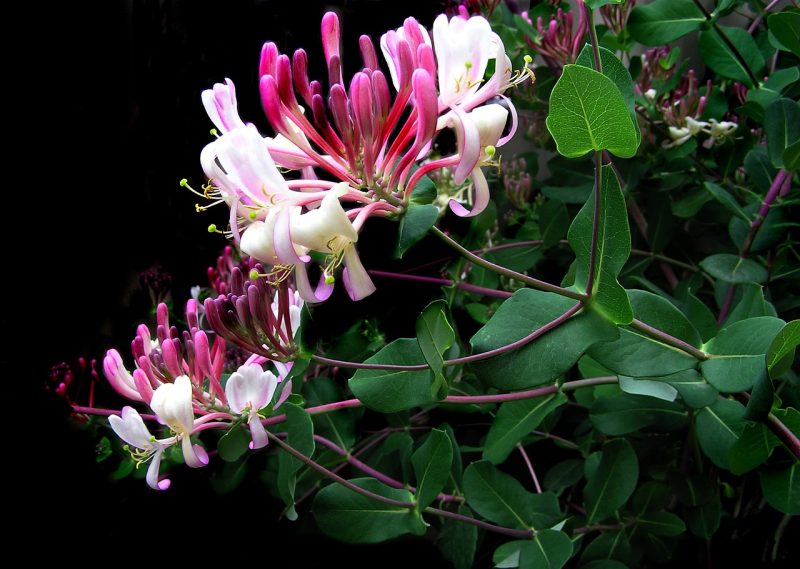
Honeysuckle plants are renowned for their intoxicating fragrance and sweet nectar, which is why they’re a favorite among hummingbirds. Their tubular flowers come in a variety of colors, ranging from yellows to deep reds, and they can be grown in hanging baskets, making them accessible to these aerial beauties. Honeysuckle is adaptable and thrives in a range of sunlight conditions, from full sun to partial shade. This versatility makes it a perfect addition to various garden designs. Besides attracting hummingbirds, honeysuckle is also a haven for butterflies and other beneficial insects, enhancing the biodiversity of your garden.
Nasturtium
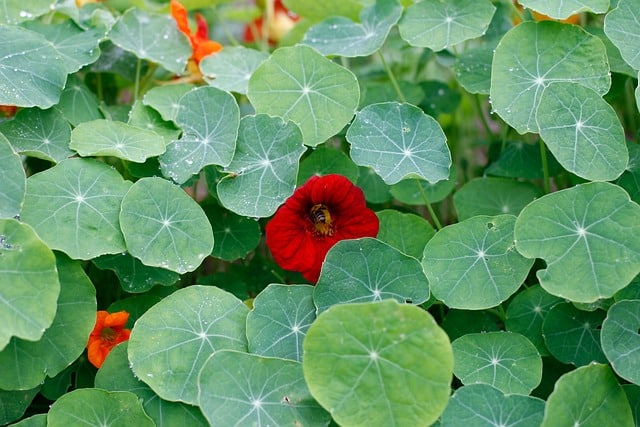
Nasturtiums are a unique choice for attracting hummingbirds. With their vibrant, edible flowers and distinctive round leaves, they add a delightful touch to any hanging arrangement. The bright orange and yellow blooms are quite appealing, both to hummingbirds and humans alike. Aside from their aesthetic qualities, nasturtiums are also known for being pest repellents, making them a practical choice in companion planting. Their nectar-rich flowers are within easy reach for hummingbirds, encouraging these little pollinators to stop by for a sip during their daily rounds.
Bleeding Heart
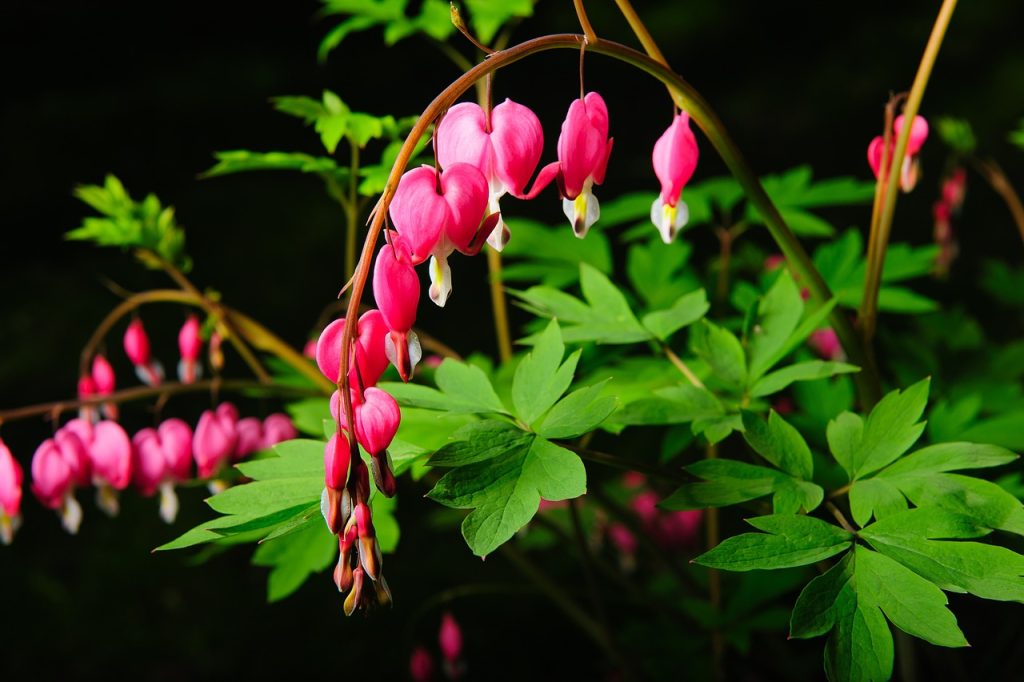
The bleeding heart is a striking perennial that can also be a lovely hanging plant when given the right conditions. Its heart-shaped flowers dangle gracefully, offering a unique visual treat that piques the interest of passersby. Though not as nectar-rich as some other plants, bleeding hearts serve as an attractive backdrop, harmonizing beautifully with brighter hues. These plants prefer shaded spots and moist, rich soil, making them ideal for hanging arrangements that benefit from a cooler environment. It’s a wonderful choice for gardeners looking to create a serene, whimsical space that might occasionally attract these enchanting birds.
Columbine
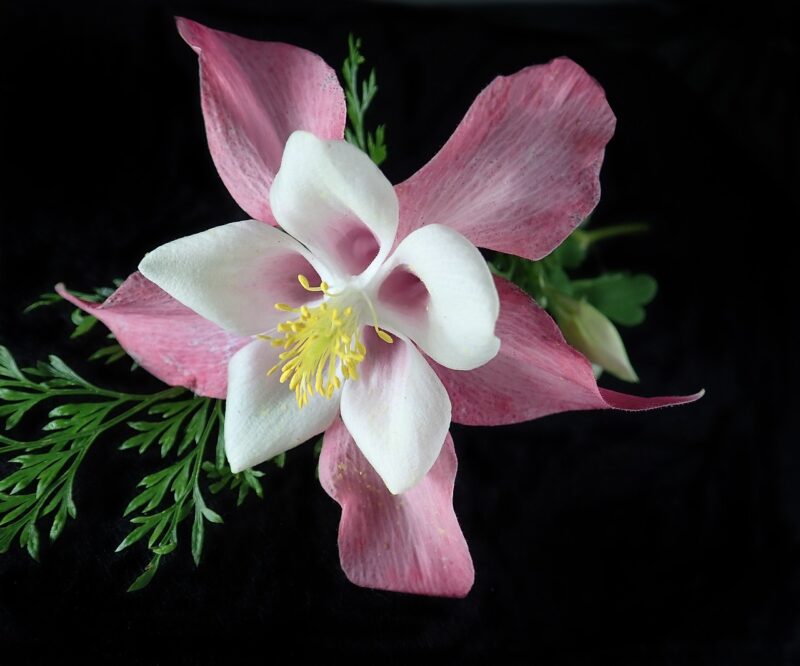
Columbines are enchanting flowers that bring a touch of whimsy to any hanging display. With their unique, spurred blossoms in a multitude of colors, they can create a delightful visual focus in your garden. The structure of columbine flowers is particularly suited to hummingbirds, who can easily access the nectar at the base of the petals. Best grown in well-draining soil with partial sun to shade, they are a perfect addition to hanging baskets that may not receive full sun throughout the day. Columbine’s rich colors and enticing nectar will surely draw hummingbirds and create a picturesque garden scene.
Impatiens
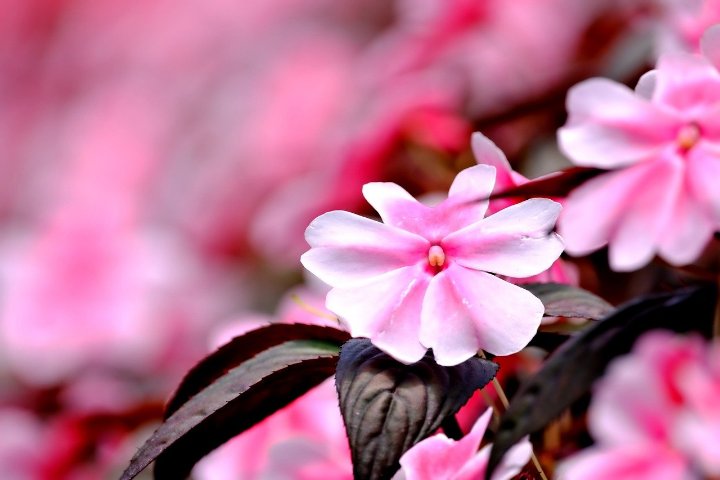
Impatiens are a staple in many gardens due to their vibrant blooms and ability to thrive in shady conditions. While their nectar production is modest compared to some plants, their colorful flowers can attract hummingbirds if planted in strategic locations. They provide an appealing backdrop and a cheerful burst of color in hanging baskets, particularly in areas where direct sunlight is limited. The abundant blooms create a lovely setting for these birds to visit, making your garden a potential hummingbird haven. Impatiens thrive in rich, moist soils, making regular watering essential for their growth and vibrant display.
Verbena

Verbena is another excellent choice for hanging arrangements, easily drawing hummingbirds to its vibrant clusters of flowers. With hues ranging from intense purples to fiery reds, verbena can provide a non-stop show of color especially during the warm months. Its nectar-rich blooms attract not only hummingbirds but also butterflies, creating a busy and colorful garden display. Verbena thrives in full sun and well-draining soil and can withstand periods of drought, making it a low-maintenance option for gardeners. Regular deadheading will promote prolific blooming, ensuring your hanging baskets remain a favored stop for hummingbirds.
Morning Glory
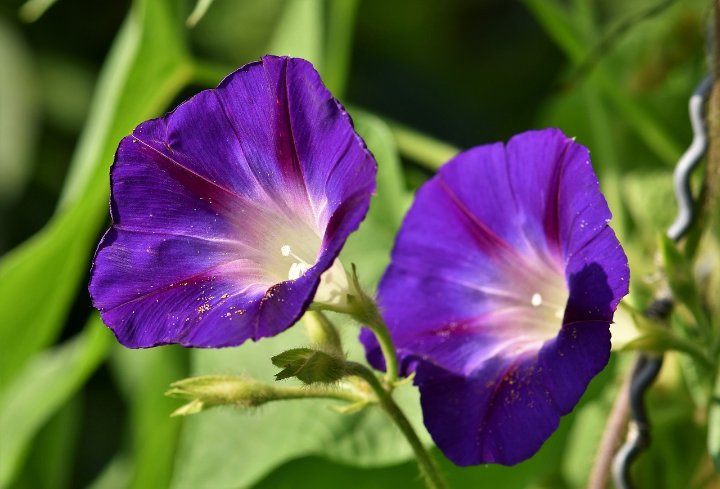
Morning glories, with their charming, trumpet-shaped flowers, are a classic choice for attracting hummingbirds. These fast-growing vines can thrive in hanging baskets, providing ample opportunity for these birds to feed. The flowers bloom in the morning and close in the evening, making them a colorful yet ephemeral feature in your garden. The wide-open blooms offer easy access to nectar, inviting hummingbirds to explore. While they do require support for climbing, they can be creatively landscaped in hanging arrangements that allow for trailing growth. Their vibrant colors and striking blooms make them a delightful addition to any home garden.
Cuphea

Cuphea, often referred to as the “cigar plant,” is a lesser-known gem that hums with appeal for hummingbirds. Its tubular flowers resemble tiny cigars, typically found in shades of purple, red, and orange, making them eye-catching in any hanging arrangement. This plant thrives in sunny spots and is remarkably drought-tolerant once established. Its long blooming period means that you can enjoy its beauty throughout the summer, while simultaneously drawing in hummingbirds eager for a drink. Cuphea’s resilience and charm make it a truly unique addition to your hummingbird attracting strategy.
Mandevilla
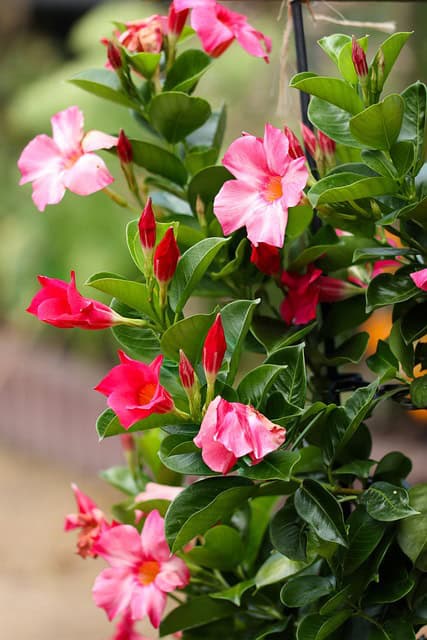
Mandevilla is a stunning, twining vine that features large, showy flowers in shades of pink, red, and white. As a climbing plant, it thrives beautifully in hanging baskets with the appropriate support, allowing it to cascade elegantly. Mandevilla flowers are rich in nectar, making them particularly appealing to hummingbirds who are drawn to their bright colors and sweet fragrance. This tropical beauty loves full sun and well-draining soil, making it perfect for sun-drenched patios and balconies. As an added bonus, its glossy foliage and magnificent blooms create an impressive focal point that enhances your outdoor living space.
Cardinal Climber
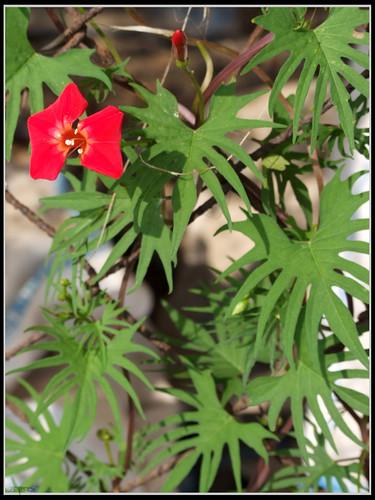
The cardinal climber, also known as Ipomoea sloteri, is a stunning vine with eye-catching red flowers that are perfect for attracting hummingbirds. This plant is known for its rapid growth and vigorous climbing habit, making it ideal for hanging planters. Its bright red blooms are not just visually striking but are also packed with nectar, enticing hummingbirds to visit for a quick sip. Cardinal climbers thrive in full sun and well-draining soil, making them an excellent choice for sunny areas in your garden. The combination of vibrant flowers and soaring growth makes this plant a superb addition for those looking to create a lively hummingbird sanctuary.
Passionflower
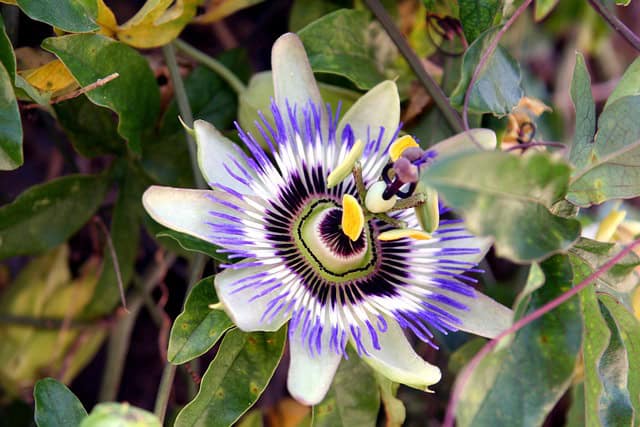
Passionflower vines are not only stunning but also attract hummingbirds with their intricate flowers and rich nectar. The unique shapes and vibrant colors of the blooms make them stand out in any hanging arrangement. Passionflower prefers full sun and well-drained soil, making it a versatile option for gardeners eager to create a hummingbird-friendly space. In addition to hummingbirds, passionflowers are known to attract butterflies, enhancing the vibrancy and life in your garden. These vines can be trained to grow in hanging baskets, where their dramatic blooms can be showcased effectively while drawing in their winged fans.
Jasmine
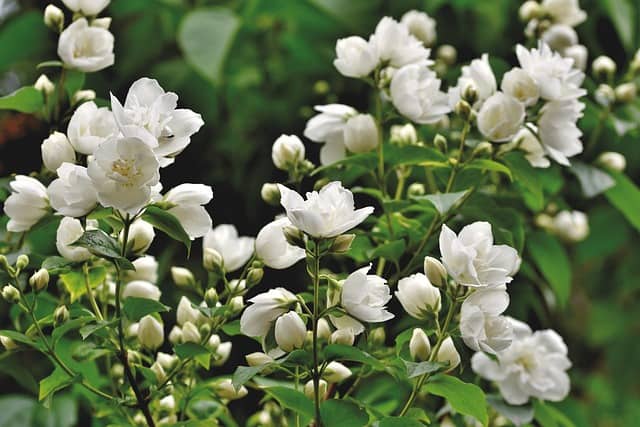
Jasmine adds a fragrant touch to hanging displays, serving both aesthetic and functional purposes in attracting hummingbirds. Known for their small, tubular flowers, these plants produce nectar that is highly appealing to hummingbirds. The variety of jasmine that works best in hanging baskets is often the star jasmine, which can spread and create a beautiful cascading effect. Jasmine prefers a sunny location, requiring good drainage and regular watering. The enchanting scent of jasmine wafting through your garden during bloom time will not only attract hummingbirds but also delight anyone who strolls by.
Four O’Clocks
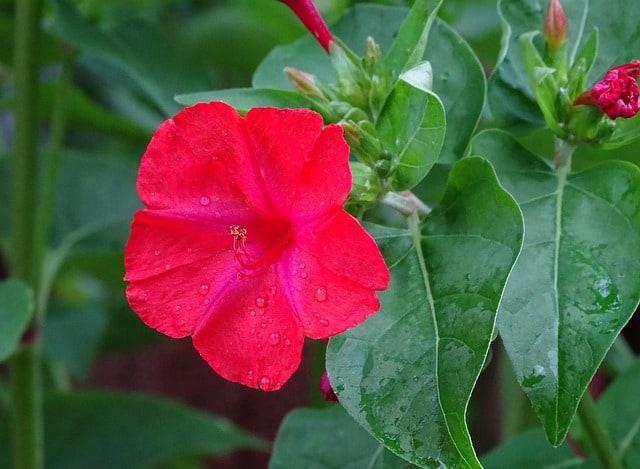
Four o’clocks are an interesting option for gardeners looking to attract hummingbirds during the twilight hours. These flowers are known for their unique evening blooming behavior, opening up around four o’clock in the afternoon. Their funnel-shaped flowers, available in vibrant colors including pink, yellow, and white, provide nectar to hummingbirds and add an enchanting touch to your garden. Planting four o’clocks in hanging containers allows for beautiful draping effects while making them accessible to visiting hummingbirds. They thrive in well-drained soil and do best in sunny locations, making them relatively easy to care for as part of your hummingbird-friendly hanging displays.
Black-Eyed Susan Vine

The black-eyed Susan vine is a cheerful, climbing plant that showcases bright yellow and orange blooms, reminiscent of its namesake. These striking flowers have a sweet nectar that draws hummingbirds, making it an excellent choice for your hanging plant collections. Its fast growth and twining habit allow it to quickly fill hanging baskets, providing a vibrant display throughout the summer. Preferring full sun, this vine thrives in well-drained soil and is relatively drought-tolerant once established. The combination of its joyous blooms and hummingbird activity makes it a delightful addition to any garden setting.
Coral Bells
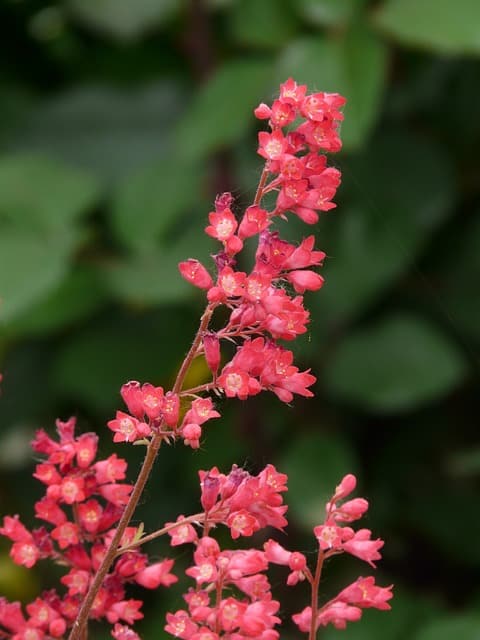
Coral bells, or Heuchera, are often admired for their colorful foliage and delicate spiky flowers. While primarily grown for their vibrant leaves, the flowers do provide a reasonable source of nectar for hummingbirds. Coral bells adapt well to different light conditions, thriving in both partial shade and full sun, making them versatile for a range of hanging displays. Their varied leaf colors can complement the flowers of other plants, creating a dynamic visual palette in your garden. With their low maintenance needs and moderate nectar production, coral bells can enhance your hummingbird garden elegantly.
Agastache
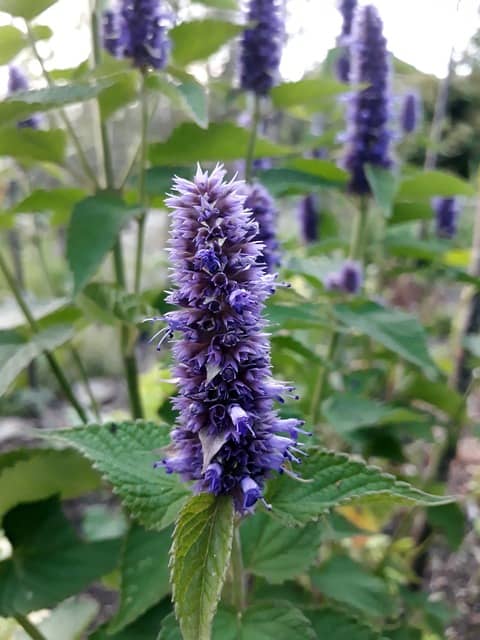
Agastache, or hyssop, is an exceptional choice for attracting hummingbirds, thanks to its fragrant spires of colorful flowers. The unique shape of agastache flowers caters directly to hummingbirds, allowing them to access the nectar with ease. With a range of colors from vibrant purples to soft pinks, these plants bring texture and height to hanging arrangements. Agastache is drought-tolerant and thrives in sunny environments, making it an ideal low-maintenance plant for busy gardeners. Besides being hummingbird favorites, agastache also attracts beneficial pollinators like bees and butterflies, enriching your garden ecosystem.
Zinnia

Zinnias are known for their bright, bold colors and long-lasting blooms, making them a fantastic choice for attracting hummingbirds. Their open, daisy-like flowers provide easy access for these small birds to sip nectar. They thrive in sunny conditions, flowering abundantly throughout the summer, which creates a vibrant landscape that lures in curious hummingbirds. Zinnias are easy to grow from seed and can adapt to various soil types, making them a beginner-friendly option for gardeners of all experience levels. The colorful display of zinnias adds liveliness and energy to your garden, inviting all types of pollinators.
Bacopa
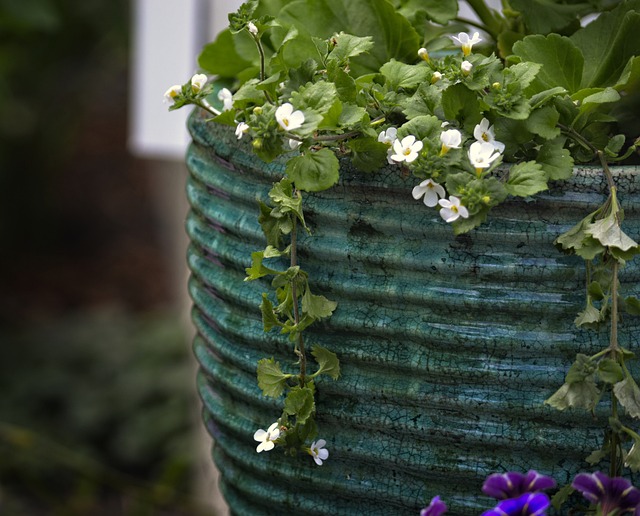
Bacopa is a lovely trailing plant that forms cascading blooms in shades of white and blue, bringing a soft touch to hanging baskets. While primarily known for its ornamental qualities, bacopa’s nectar-rich flowers can also attract hummingbirds seeking a quick meal. This plant performs well in cooler conditions and prefers partial shade, making it an excellent choice for those looking to create a more serene, shaded hummingbird-friendly environment. With consistent moisture and well-draining soil, bacopa can thrive, wrapping around hanging planters and demonstrating its delicate charm.
Calibrachoa
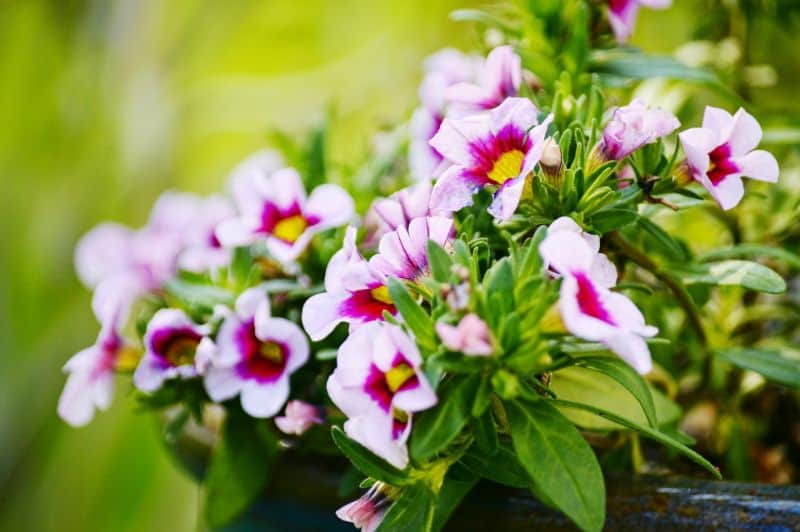
Often referred to as million bells, calibrachoa produces profuse, small-flowered blooms resembling mini petunias. These vibrant flowers are excellent for attracting hummingbirds and creating an eye-catching display in hanging baskets. Calibrachoa thrives in full sun with well-drained soil, requiring minimal maintenance once established. Their extended blooming period ensures a long-lasting source of color and nectar, drawing hummingbirds throughout the warmer months. With their charming beauty and hummingbird appeal, calibrachoa plants are ideal for those who want a dynamic garden filled with life and color.
Torenia
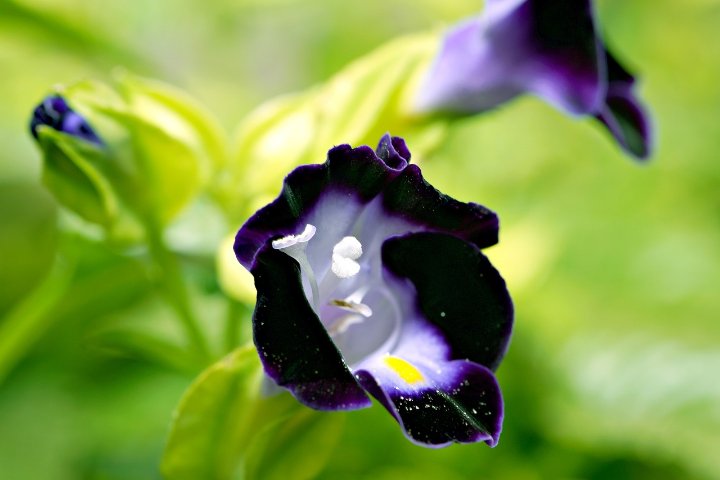
Torenia, also known as wishbone flower, is a delightful annual that thrives in partial shade and offers trumpet-shaped blooms that attract hummingbirds. Its colorful flowers can come in shades of purple, blue, and white, adding a lovely touch to hanging displays. Though the plants may require a bit of care in terms of watering to keep them blooming beautifully, their resilience and attractiveness make up for it. Torenia provides a lush look while inviting hummingbirds to stop by for a refreshing drink, making it a suitable choice for shaded areas in your garden.
Fountain Grass
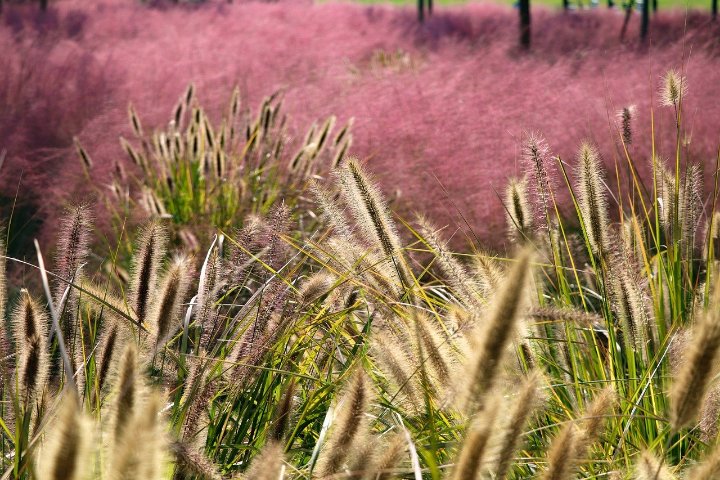
Though typically used for ornamental purposes, fountain grass can also create a delightful habitat that attracts hummingbirds. Its airy plumes and graceful structure can enhance a hanging arrangement’s visual appeal while providing shelter for small birds. While the grass itself may not produce nectar, its overall presence can complement a variety of flowering plants within a hanging display to create a lush environment where hummingbirds can feel comfortable. Fountain grass prefers sunny spots and well-draining soil, thriving with relatively little maintenance.
Butterfly Bush
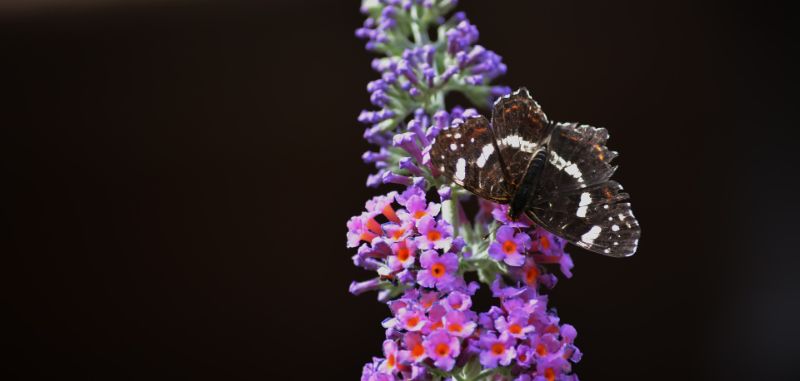
Butterfly bush is a robust plant that doesn’t just attract butterflies; it also creates an inviting environment for hummingbirds looking for sustenance. Known for its long panicles of flowers in an array of colors, butterfly bush offers ample nectar for these delightful birds. While typically grown as a larger shrub, varieties that are suitable for hanging baskets create opportunities for vertical gardens and unique arrangements. With a preference for sunny spots and well-draining soil, butterfly bush can bloom abundantly and resoundingly attract hummingbirds, allowing garden enthusiasts to revel in both color and wildlife activity.
Red Hot Poker

Red hot poker, or kniphofia, boasts a striking appearance with its tall, torch-like flower spikes. The vibrant colors ranging from fiery red to bright orange make it a compelling feature in any hanging garden setup. Its unique shape and rich nectar content draw hummingbirds who undoubtedly appreciate this culinary delight. The red hot poker thrives in sunny locations, and as a drought-tolerant perennial, it can withstand various growing conditions. Not only does it attract hummingbirds, but it also serves as an incredible standing piece in your garden display, bringing both allure and activity to your outdoor space.


